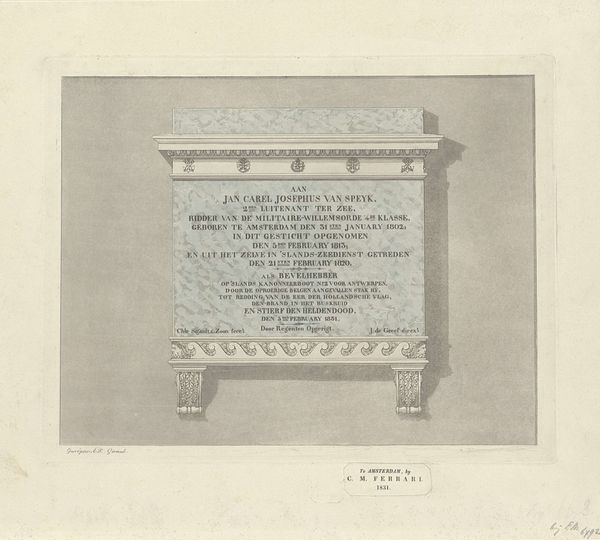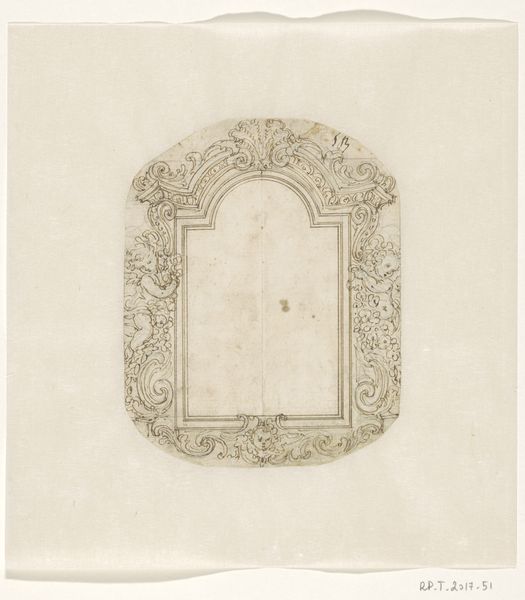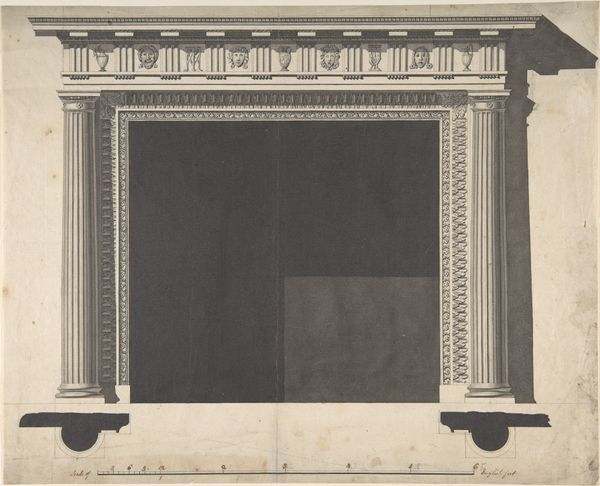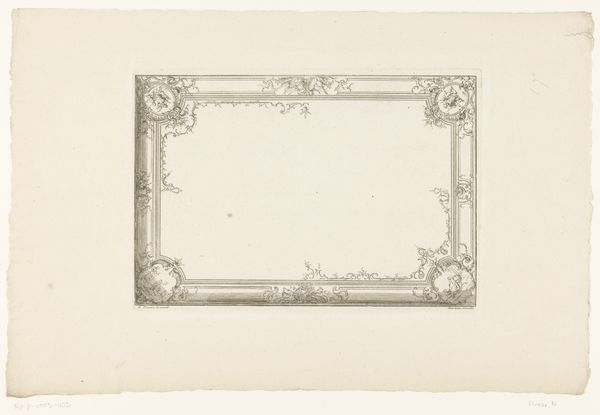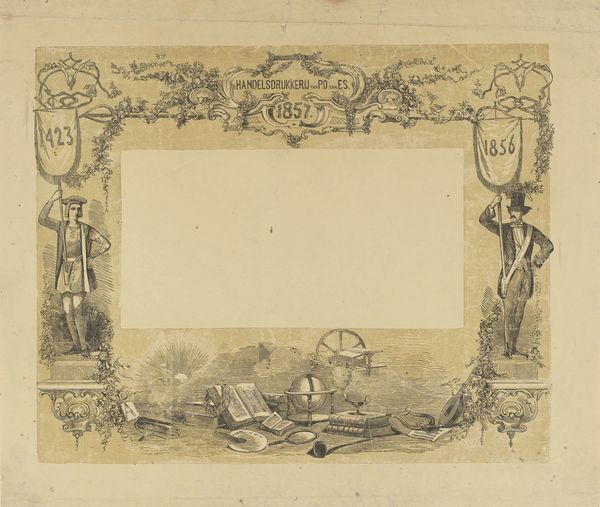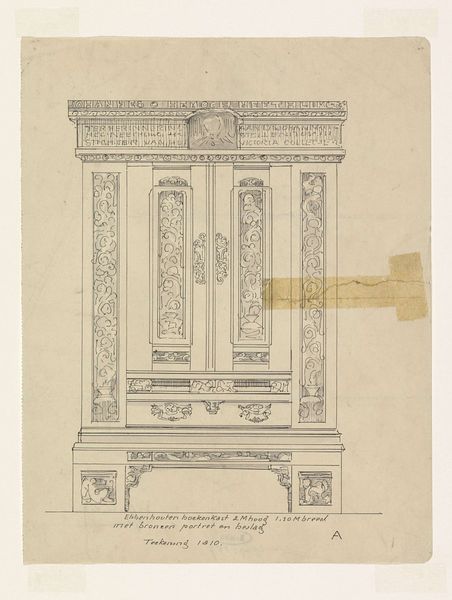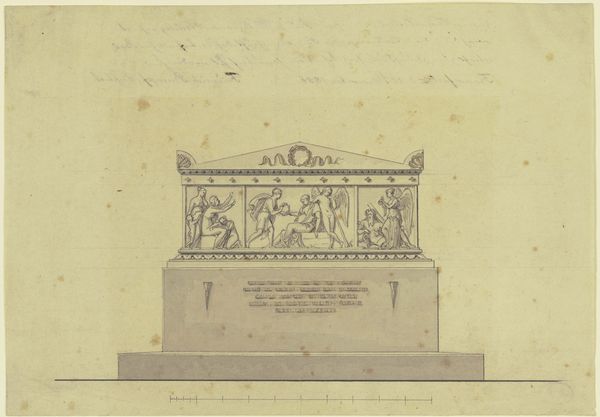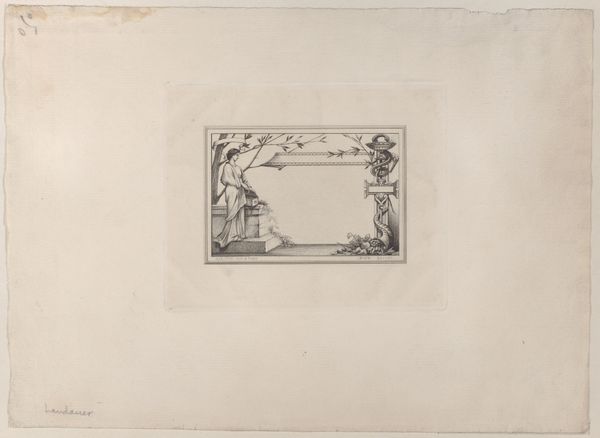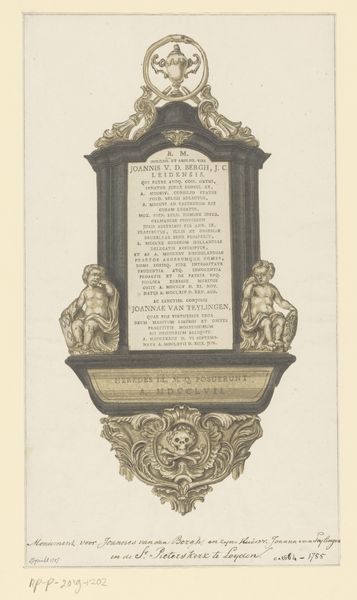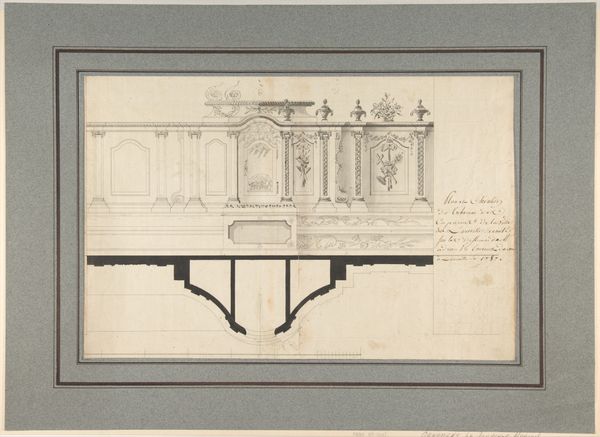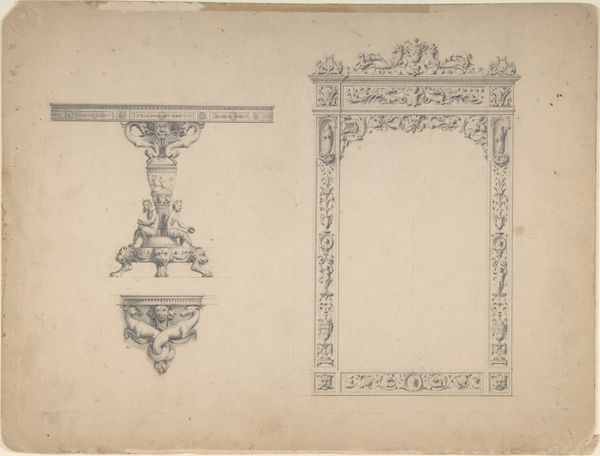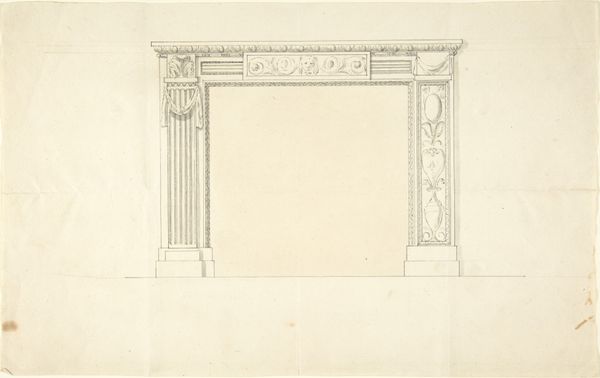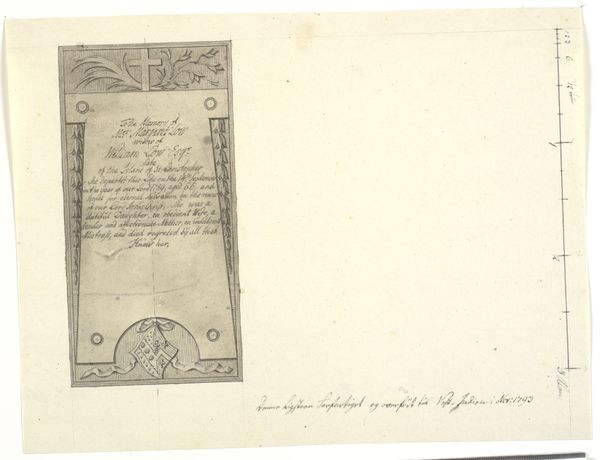
drawing, paper, pencil
#
portrait
#
drawing
#
historical design
#
muted colour palette
#
paper
#
pencil
#
history-painting
Dimensions: width 384 mm, height 320 mm
Copyright: Rijks Museum: Open Domain
Curator: This is Alphonse Pierre Giraud’s "Gedenksteen voor Jan Carel Josephus van Speijk," a memorial stone drawing made after 1831. The artist used pencil on paper. Editor: It has a formal, almost austere quality to it. I'm struck by the muted color palette, that almost faded, antique appearance. Curator: Yes, the greyed-out tones and formal presentation certainly lend it a historical weight. It feels like a blueprint for remembrance. Jan van Speijk, as the inscription declares, was a lieutenant—he blew up his ship rather than surrender to Belgian insurgents in 1831. Editor: That action makes him a controversial figure. Was he a hero, or was it an act of extreme violence fueled by nationalism? Context matters, because national narratives surrounding such figures tend to erase nuanced perspectives, and glorify a singular viewpoint. Curator: Indeed. This drawing's formality—the balanced symmetry and classical motifs—supports a very specific interpretation. Note the stone itself resembles a grave marker, so the whole imagery supports mourning of loss due to a moment of self-sacrifice and honor. Editor: The careful inscription almost sanctifies the moment. The artist's choices position Speijk's actions within a tradition of heroic, self-sacrificial acts, and effectively erases any questioning or ambiguity, thus constructing a cultural mythology. Curator: You are right. The composition, down to the very classical details of its corbels, frames van Speijk within that lineage. Think of Greek and Roman architecture that carries embedded stories. Every component becomes part of the language of historical continuity. Editor: Even the muted colors and aged look support that narrative. So many monuments celebrate very particular and, at times, deeply divisive, episodes. It is helpful to consider, whose stories get cast in stone, and which are suppressed? Curator: Thank you. Reflecting on these details makes it all so much more rewarding. Editor: Absolutely. Recognizing art's historical complexity invites much needed reevaluation.
Comments
No comments
Be the first to comment and join the conversation on the ultimate creative platform.
